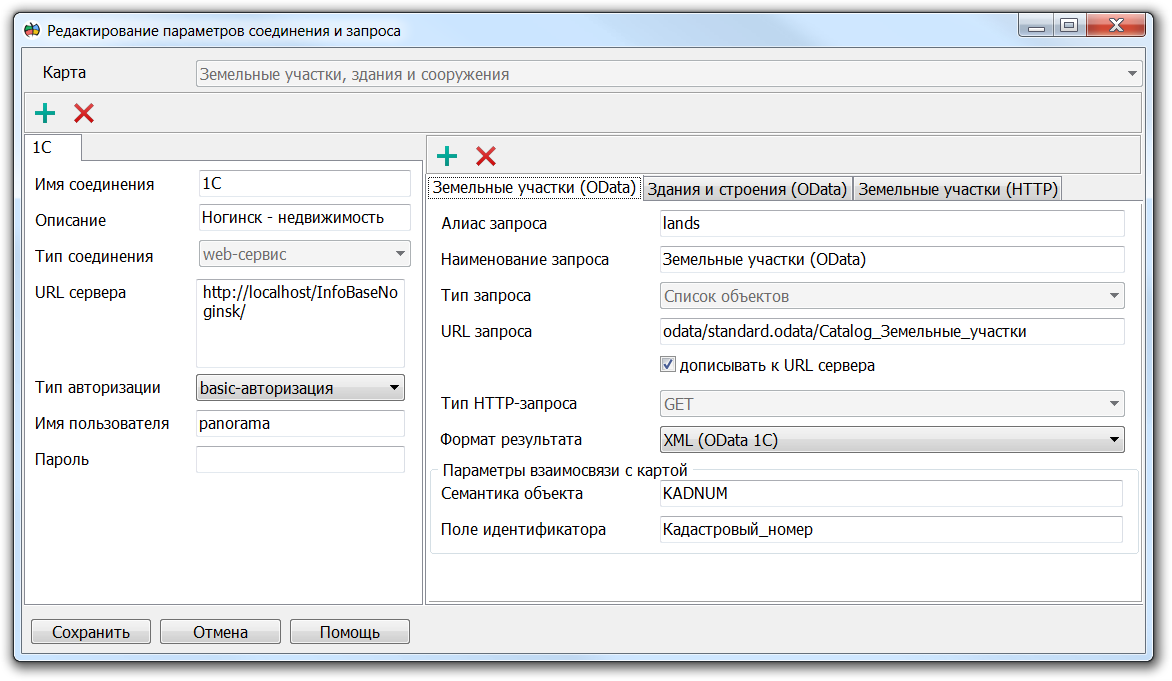Viewing data from «1C: Enterprise» and other HTTP services |




|
|
External sources of attributive data can be configured for the user map. These sources are accessed through the NTTR protocol. The returned data set in XML format is a table, where the nodes within the main node of the document are the records of this table, and the first-level child nodes within them are the fields of the table. The sources of attributive data can be: - any HTTP services that return a data set in XML format in response to a GET request (as indicated above); - «1C:Enterprise» web service, which returns a data set in XML format in response to a GET request, including in accordance with the OData protocol. The connection of records of a data set from an external source with map objects is carried out according to the value of the key field and the predefined semantics of the object, which is specified in the settings. Several external sources can be configured for a user map, for each of which the one or more attributive data requests can be configured. The specified settings are saved in a file with the *.SES extension, located next to the map passport file and having the same name. The dialog for setting sources of external semantics is called by pressing the «Settings» button in the «Information from the database table» dialog box, as well as from the context menu called by right-clicking on the tree element corresponding to the customized user map in the «Map Legend» window (F11 ).
Dialog for setting sources of external semantics
Order of customization of requests of external semantics
| ||||||||||||||||||||||||||||||||||||||||||||||||||||||||||||||||||||||||||||||||||||||||||||||||||||||||||||||||||||||||

